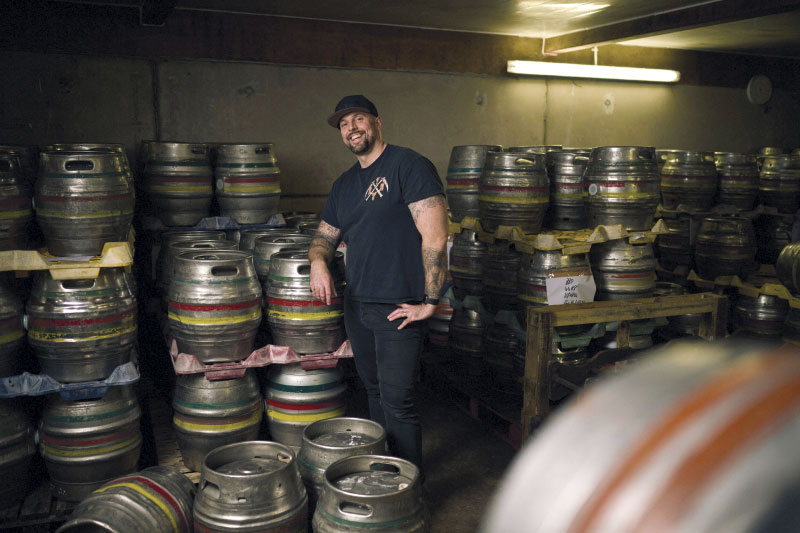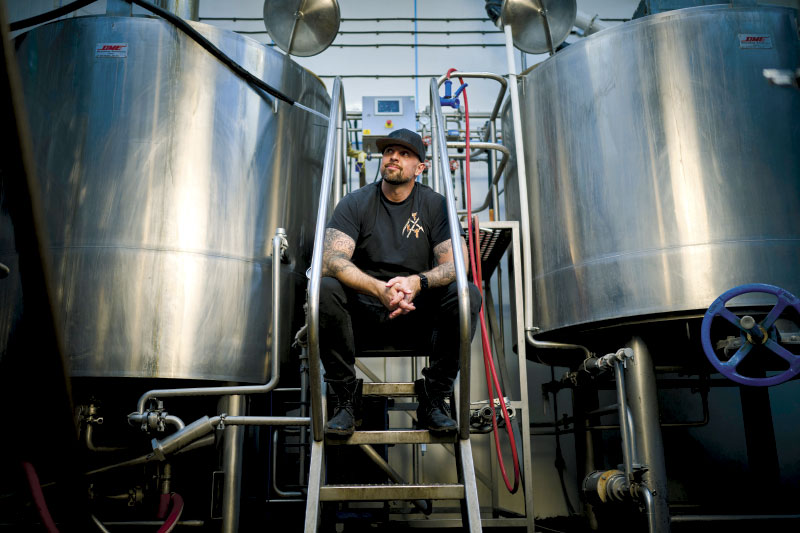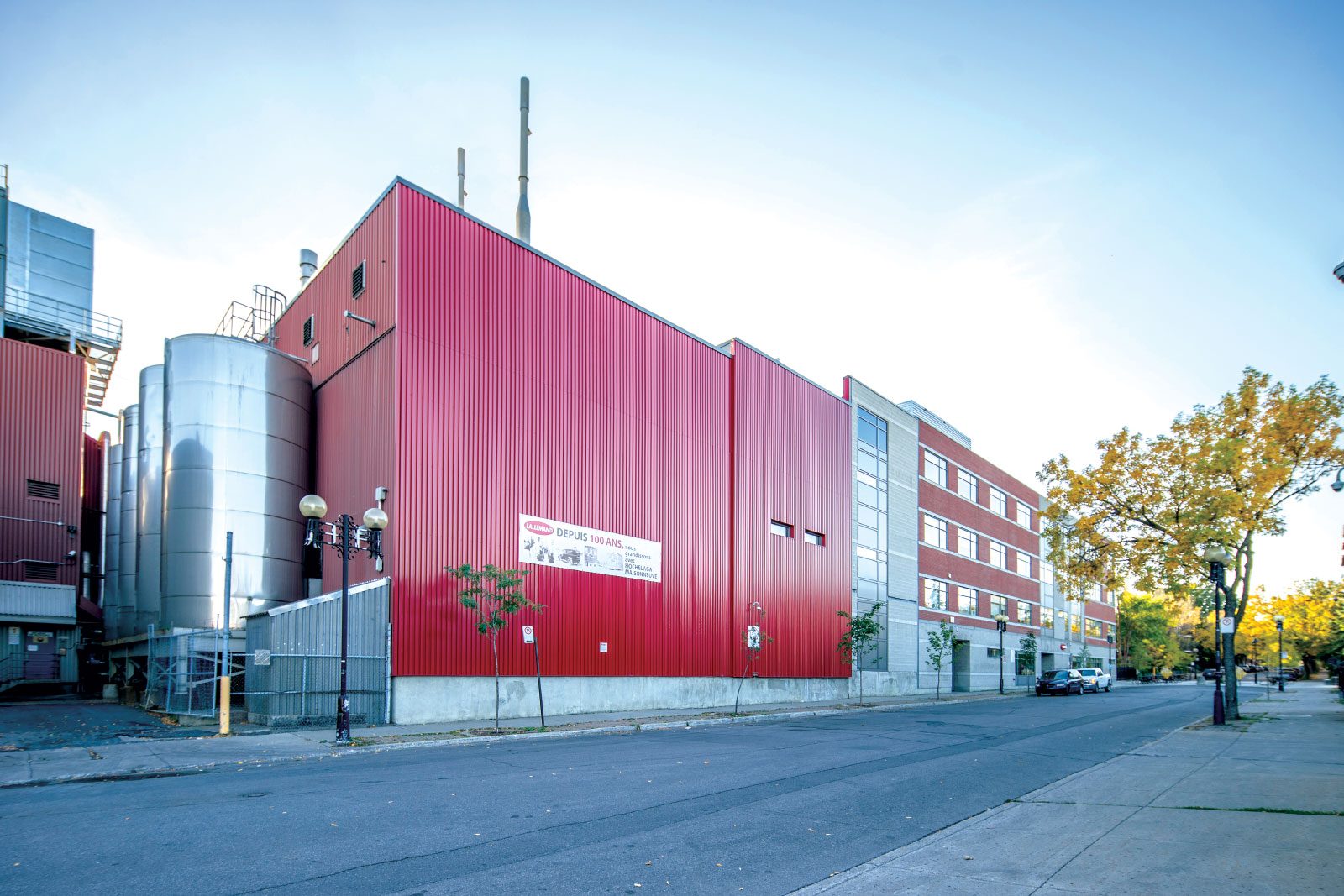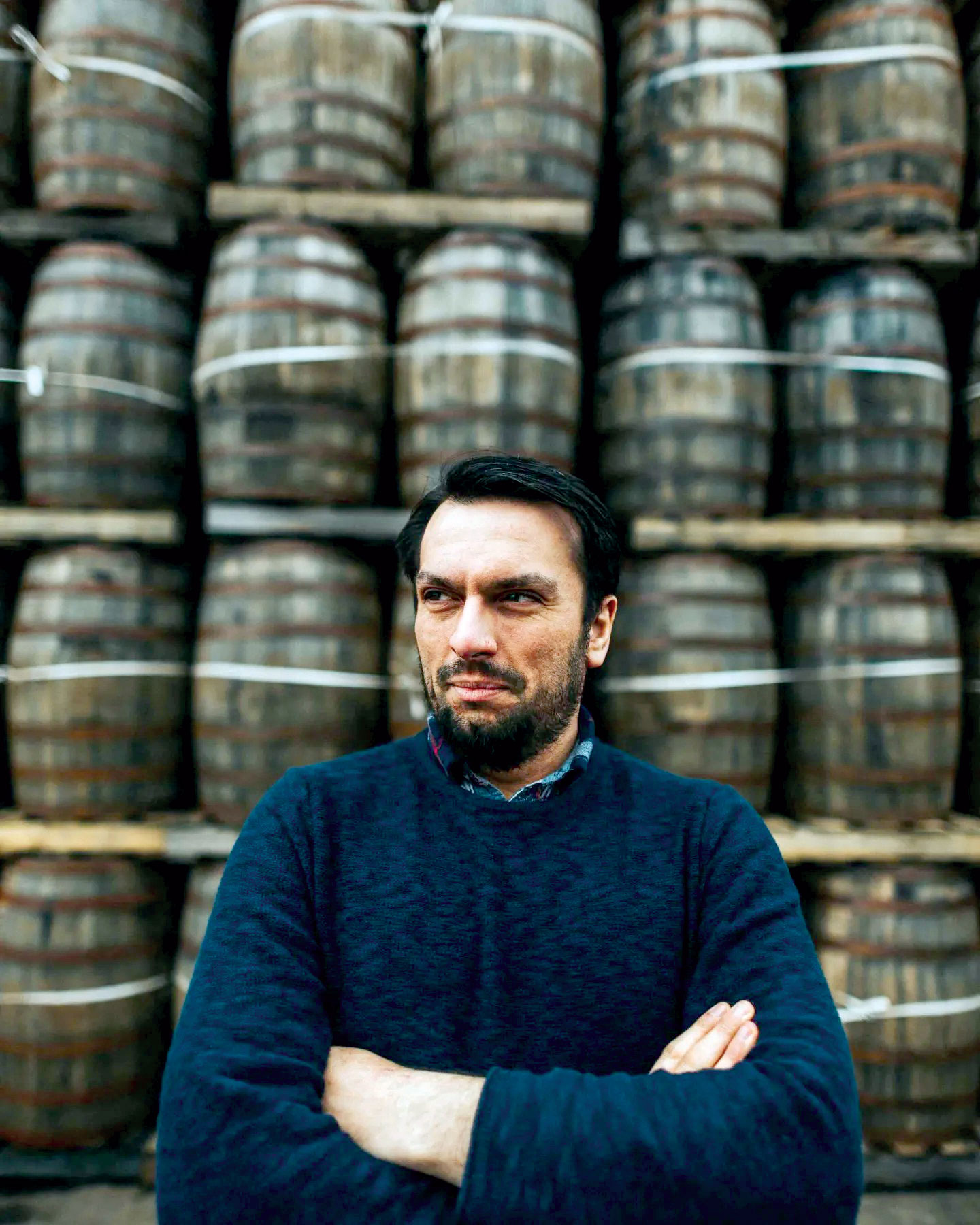Step into any liquor store and you might believe the battle for a customer’s attention has already been won. Shelves explode with eye-catching designs, custom illustrations and clever names worthy of a second glance.
For many craft producers, that surface-level appeal feels like the whole game: get the label right and the rest will follow. But according to Tim Weaver, U.K.-based branding strategist, founder of The Brand Weaver and host of the “Branding for Breweries” podcast, that mindset is the exact trap holding many alcohol companies back.
“The well-known quote that ‘your brand is what people say about you when you’re not in the room’ is accurate,” Weaver said. “It’s not just your logo or a label. Your brand is how you integrate into someone’s life, how you amplify it and how you reinforce their identity. When you get branding right, grabbing your product at a barbecue or a family dinner becomes second nature. It’s just the piece of the puzzle that fits.”
More than meets the label
In practice, branding means creating a sense of place for your product in a consumer’s life so it feels like the obvious choice in any given moment. While that does include tangible items like your label or packaging, it also extends into every branch of your business: your social media, your messaging, even the way you interact with customers. Your branding shapes how your target audience perceives your company in the first place and reinforces that perception at every turn. Branding is your most powerful differentiator in a competitive market and it’s a strong influencer of customer loyalty.
That’s a lot more than a label, so how do you actually do it? When Weaver works with a producer to define what encompasses the brand, he starts with what he calls a “point of truth.” That truth is the only thing that can hold a brand steady through growth, market shifts and customer churn. “If it’s not true, your company isn’t going to believe in it and neither will your customers. It comes across fake, like the cheesy car salesman approach,” he said. “But when you find that element of truth – what you really stand for – it becomes your North Star. It’s what every message, every visual, every marketing channel should stem from.”
The first pint is sold on awareness. The second is sold on taste. You can’t get to the second without the first.
Tim Weaver
Weaver’s framework for finding that point of truth is deliberately research-heavy. It starts with the company itself: what are the real strengths of the business, and what does the team believe sets them apart? This could be location, ingredients or sheer passion. From there, he looks outward to its customers, determining what keeps them coming back and why they reach for this brand instead of another. The final step is a close study of the competition, examining both the messages they put forward and the missteps best left unreplicated. When those three filters overlap, genuine brand positioning comes into focus.
The benefit is that once you’ve identified your brand purpose, or your North Star, consistency becomes easier. It doesn’t just inform your Instagram captions; it can show up in your taproom culture, your email newsletters, and even the way you speak to restaurant owners and distributors. “Your messaging, values, tone of voice, channels and any elements you use to promote your brand are fed from that one central point of truth,” said Weaver. “It influences everything you do from that point. It should be baked in.”
For example, for U.K.-based Wilful Beer, its “craft, not daft” positioning packs strategy behind clever wordplay. With a small team, old equipment and a commitment to making no-nonsense, great-tasting beer, its entire identity is rooted in the value of doing things by hand. That ethos carries through in how it shows up for customers: tradespeople get discounts as a nod to their own manual craft, coasters double as writable surfaces so drinkers can “leave their mark,” and its visual identity leans on imperfect, handmade fonts and textures rather than anything overly polished.
These deliberate choices all make sense because they are true to the way the brewery operates day to day. What you see in the branding is exactly what’s happening behind the scenes in the brewhouse.
When good brands go bad
Even with the best intentions, many producers stumble when it comes to branding. Weaver sees the same pitfalls repeated across the industry: mistakes that not only dull a brand’s impact, but can also prevent a great product from ever finding its audience. The first and most dangerous trap is assuming that liquid alone is enough.
“Be mindful of the Field of Dreams mentality. ‘Brew it and they will come’ is not a strategy. The best beer in the world doesn’t sell itself if nobody knows about it,” Weaver said. “The first pint is sold on awareness. The second is sold on taste. You can’t get to the second without the first.”

That belief often goes hand-in-hand with another mistake: looking inward instead of outward. Many producers, Weaver says, create for themselves and their friends, not for the broader market. That kind of thinking alienates the vast majority of drinkers who aren’t alcohol nerds chasing the next experimental release.
“Most people just want a great product that fits the moment. Brands need to stop talking to themselves and start talking to their consumers,” said Weaver. That doesn’t mean there isn’t space to play, though, simply that it must be approached strategically. “Understand what your consumer wants, win them over with that and gain the permission to introduce them to something unique that you’re really proud of,” said Weaver.
While Weaver is a proponent of “secret shopping” to see what a brand’s competitors are doing well (or not so well), he cautions that too many producers fall into the trap of looking only sideways within their own category. Studying another brewery’s taproom might show what’s trending, but it won’t necessarily reveal what’s truly distinctive. By contrast, looking outside the industry can spark ideas that feel fresh and unexpected.
“You can learn so much more from walking through a hotel lobby about how to improve your taproom than you can by going to your competitor’s taproom,” he said. The lighting, the flow of people, the way a space creates mood and comfort – these are lessons that apply to alcohol branding just as much as they do to hospitality.
Producers live their brand every day, so they can get tired of it quickly. But your customers might only interact with you once every couple of weeks. To them, you’re not repetitive – you’re finally becoming clear.
Tim Weaver
Finally, Weaver bristles at overused buzzwords like “quality,” “community,” and “authenticity,” that have been drained of meaning. “If you have to say you’re authentic, you probably aren’t,” he said. “Every producer will claim quality. Every brewery will claim community. Those words mean nothing if you can’t show what they actually look like in practice.”
Keep your story straight
Entrepreneurs are an ambitious bunch, always finding inspiration to execute new ideas. While there’s nothing wrong with dreaming big, when it comes to branding, it’s essential to filter every idea through your North Star. Flash can grab attention for a moment, but it’s consistency that keeps customers coming back. “You actually do your customers a disservice by veering off track,” said Weaver. “It can be confusing for them when you do something off kilter to what you typically communicate.”
In that sense, it might behoove you to feel like you’re drilling the message a little too hard. “Producers live their brand every day, so they can get tired of it quickly. But your customers might only interact with you once every couple of weeks. To them, you’re not repetitive – you’re finally becoming clear.” That means weaving your messaging through every channel over and over again, on the assumption that it’s likely only a fraction of your audience saw your social media post, newsletter or poster. “Continue to repeat and reinforce your core message,” said Weaver.

That said, consistency doesn’t mean staying static. It means finding ways to carry your story across every touchpoint, from coasters and bar mats to emails and events. Through any medium, whether it’s print advertising, social media, networking, podcast interviews or anything else, approach all aspects with your brand purpose in mind. Each medium requires its own tactics, but all should feel unmistakably like the same brand.
Shelf esteem
So, you’ve got a strong brand position, you’re crystal clear on your message and what you stand for, and you know what you want your customers to associate with your company. Now, how do you get that onto the shelves? In liquor store aisles, where a split-second decision can make or break a sale, Weaver says disruption is the goal. It’s a matter of bringing your point of truth to life. This is where illustrators and designers earn their keep, finding ways for visuals to carry your brand story. Sometimes disruption is subtle: a different can size, a contrasting top colour or an unusual label texture.
“It’s not always about the design itself,” Weaver said. “Sometimes, it’s the shape or the feel that stops someone’s eye as they’re scanning.” Weaver says that producers often pour budget into striking front-of-bottle artwork, but ignore the rest of the package. “The back of the package is prime real estate to tell your story. Too often it’s wasted on a giant barcode or clunky layout. Design is about storytelling across the whole package, not just the cover art,” said Weaver.
Beyond the shelf, he says that small producers often overlook low-cost opportunities to stand out at the point of sale. Coasters, balloons or even a display box that doubles as a shelf unit can multiply visibility without multiplying spend. Sometimes, it’s as simple as noticing a need in the space itself – like a bar with uncomfortable stools – and offering a solution, whether that’s branded cushions or another thoughtful detail that puts your product at the centre of the experience.
“If you can be the one brewery remembered out of 20 samples at a festival or 100 options on a shelf, you’ve won,” Weaver said. However, the real differentiator isn’t novelty for novelty’s sake – it’s integration. Producers who understand who their drinkers are and how their product fits into customers’ lives will always have the edge. Packaging might earn a second glance, but it can only take a brand so far. The ones that have longevity are the producers who carry their truth through every touchpoint, until it stops feeling like marketing and starts feeling like identity.
“Great branding informs how a product fits into your customer’s ritual, their moment, their identity,” Weaver said. “That’s when branding moves beyond packaging. That’s when it becomes part of people’s lives.”




